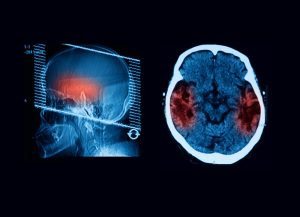Welcome to the Intracranial Hemorrhage Surgery Clinic at Emirates Hospitals Group, where we specialize in the diagnosis, treatment, and management of intracranial hemorrhages. Intracranial hemorrhages, or bleeding within the brain, can be a life-threatening condition that requires immediate medical attention. Our team of expert neurosurgeons, neurologists, and healthcare professionals are dedicated to providing the highest quality of care using advanced diagnostic tools and cutting-edge surgical techniques to treat and manage this critical condition.
Whether caused by trauma, aneurysm rupture, or other medical conditions, we offer personalized care tailored to your specific needs, ensuring you receive the most effective treatment for the best possible recovery.
What are Intracranial Hemorrhages?
Intracranial hemorrhages (ICH) refer to bleeding within the brain. This condition can occur in various regions of the brain and may be caused by a number of factors, including head trauma, high blood pressure, ruptured blood vessels (such as aneurysms), or blood clotting disorders. The bleeding puts pressure on the brain tissue, which can cause brain injury, neurological deficits, and other severe complications.
There are several types of intracranial hemorrhages, including:
- Epidural Hematoma: Bleeding between the outer layer of the brain and the skull, often caused by trauma.
- Subdural Hematoma: Bleeding between the brain’s surface and the outer layer of the meninges, typically caused by head injury.
- Intracerebral Hemorrhage: Bleeding within the brain tissue itself, which is often caused by high blood pressure or trauma.
- Subarachnoid Hemorrhage: Bleeding in the space between the brain and the thin tissues covering it, often caused by a ruptured aneurysm.
The severity of intracranial hemorrhages depends on the type, size, and location of the bleed. Prompt medical intervention is essential for preventing further damage and improving the chances of recovery.

Symptoms of Intracranial Hemorrhages
The symptoms of intracranial hemorrhages can vary depending on the location and size of the bleeding. Common symptoms include:
- Sudden, severe headache: Often the first symptom of an intracranial hemorrhage.
- Nausea and vomiting: These symptoms may occur due to increased pressure inside the skull.
- Loss of consciousness: In severe cases, the person may lose consciousness or be in a coma.
- Seizures: Bleeding in the brain can lead to abnormal electrical activity, causing seizures.
- Weakness or paralysis: Often on one side of the body, depending on the location of the hemorrhage.
- Vision problems: Blurred vision, double vision, or loss of vision in one or both eyes.
- Speech or cognitive difficulties: Trouble speaking or understanding speech, or confusion.
- Dizziness or loss of balance: Difficulty walking or maintaining coordination.
If you or someone you know experiences these symptoms, it is critical to seek emergency medical attention immediately.
Intracranial Hemorrhage Treatments in Dubai at Emirates Hospitals Group
At Emirates Hospitals Group, we provide the most advanced treatment options for intracranial hemorrhages, tailored to the type and severity of the bleed. Our approach is focused on minimizing brain damage, relieving pressure, and promoting recovery.
Non-Surgical Treatments in Dubai
In some cases, if the bleeding is small and does not cause significant pressure on the brain, non-surgical treatment may be sufficient. This approach may include:
- Monitoring and observation: Regular scans and neurological checks to monitor the bleeding and ensure it does not worsen.
- Medications: To control blood pressure, prevent seizures, or reduce swelling in the brain.
- Supportive care: Such as oxygen therapy and IV fluids to maintain overall health while the body heals.

Surgical Treatments in Dubai
For more severe intracranial hemorrhages or when the bleeding does not stop on its own, surgical intervention may be necessary. Common procedures include:
- Craniotomy: A portion of the skull is removed to access the brain and remove the blood clot or hemorrhage.
- Craniotomy with evacuation: In cases of subdural or epidural hematomas, a craniotomy may be performed to evacuate the clot and stop the bleeding.
- Endoscopic surgery: For some types of intracranial hemorrhages, minimally invasive techniques may be used to remove the clot and alleviate pressure.
- Aneurysm clipping or coiling: If the hemorrhage is caused by a ruptured aneurysm, a procedure to seal off the aneurysm may be required to prevent further bleeding.
Our neurosurgeons use advanced imaging techniques, such as CT scans and MRIs, to precisely locate the hemorrhage and determine the best course of action.
Diagnostic Approaches for Intracranial Hemorrhages
Timely and accurate diagnosis is essential for effective treatment. At Emirates Hospitals Group, we use state-of-the-art diagnostic tools to identify and assess intracranial hemorrhages:
- CT Scan: A CT scan is the primary imaging tool used to quickly detect bleeding in the brain and determine its size and location.
- MRI: Magnetic resonance imaging (MRI) is often used for more detailed imaging, especially for smaller bleeds or to assess the surrounding brain tissue.
- Angiography: If a ruptured aneurysm or blood vessel is suspected, angiography may be used to visualize the blood vessels in the brain.
Our experienced team uses these tools to create a personalized treatment plan to address the hemorrhage and prevent complications.

Recovery and Post-Treatment Care for Intracranial Hemorrhages
Recovery from an intracranial hemorrhage depends on the severity of the bleeding, the type of treatment received, and the patient’s overall health.
At Emirates Hospitals Group, we provide comprehensive post-treatment care to help ensure the best possible recovery:
- Hospital Stay: Patients will typically stay in the hospital for several days to weeks depending on the severity of the hemorrhage and treatment.
- Monitoring: Close monitoring of vital signs, brain function, and recovery progress is essential during the initial recovery phase.
- Rehabilitation: Some patients may need physical therapy, occupational therapy, speech therapy, or cognitive rehabilitation to regain lost functions or improve mobility.
- Medications: Pain management and medications to reduce brain swelling or prevent seizures may be prescribed.
- Follow-Up Appointments: Regular follow-up visits and imaging tests will be scheduled to track recovery and detect any complications.


